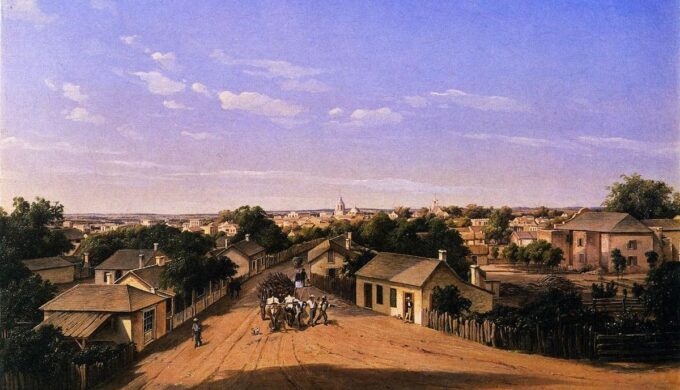We all know the Texas Hill Country is a beautiful place with interesting topography, diverse flora and fauna, and a unique history that expands every day. Many people own a wide range of art focused on this area of Texas. One man started this movement of recording the landscapes of the Hill Country: Hermann Lungkwitz. Today, his paint box is held at the Bullock Museum in Austin.
History
Hermann Lungkwitz, First Landscape Artist of the Texas Hill Country

Photo: Wikipedia, Hermann Lungkwitz: by Friedrich Richard Petri, ca. 1851
Born on March 14, 1813 in Halle, Saxony-Anhalt, Germany, this artist captured scenery via painting and later, as the medium developed, photography. His works became some of the very first pictorial records of the Texas Hill Country. His work is considered “romantic” in nature and style, and it made use of light to create luminosity, coupled with bright earth colors as typical elements of Lungkwitz’s detailed, carefully worked compositions.

Photo: Wikipedia, Texas Military Institute, Austin
Trained academically and under other artists in Europe, Lungkwitz and his brother-in-law Friedrich Richard Petri migrated with their families to the United States in 1850, then to Texas in 1851, settling in Pedernales until 1864. While there, Lungkwitz often depicted the Guadalupe river valley and Enchanted Rock, personal favorites, as well as New Braunfels, Sisterdale, Marble Falls, Hamilton Pool, West Cave at Round Mountain, and areas around San Antonio and Austin in both pencil and paint.

Photo: Wikipedia, Crockett Street Looking West, San Antonio de Bexar
Later, Lungkwitz became a photographer for the Texas General Land Office. His daughter, Martha Lungkwitz Bickler, also received an appointment here, a rarity for women at the time. He also taught art skills in his later years in an academic setting, as well as via personal tutoring. Overall, Lungkwitz and his wife Elise raised six children. Elise passed away in 1880, and Lungkwitz died on February 10, 1891. They are buried next to one another in Austin. Works by Hermann Lungkwitz depict European and Texas landscapes, and they occasionally come to the market. Their beauty is as enduring as the subjects themselves.



